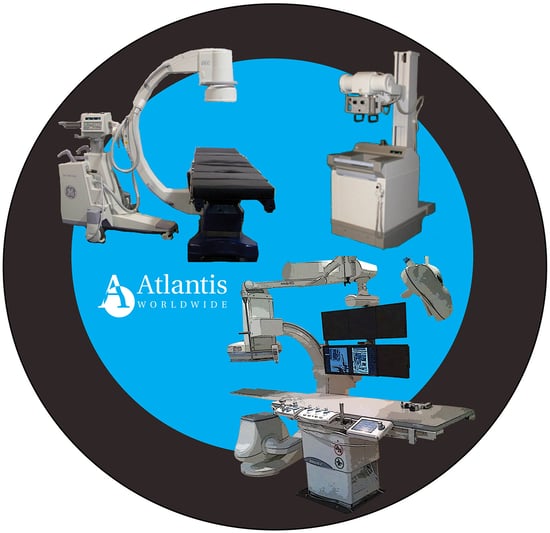If you have X-ray equipment, it’s important to pay attention to maintenance schedules and performance issues. One of the major components in an X-ray unit is the collimator, which is comprised of a series of mirrors, lights and lead leaves (strips) that direct and filter an X-ray beam. If any of these parts fail, they must be repaired or replaced. So what are the common problems with collimator heads and how do you deal with them?
which is comprised of a series of mirrors, lights and lead leaves (strips) that direct and filter an X-ray beam. If any of these parts fail, they must be repaired or replaced. So what are the common problems with collimator heads and how do you deal with them?
Every X-ray unit has a light bulb, lead glass enclosure and collimator leaves. Whether you have a portable machine, C-arm or general rad room, these elements of a collimator head can fail.
How A Collimator Works
- Inside the glass enclosure, the collimator lead strips guide the X-rays to the imaging surface.
- The collimator prevents the divergent beam from exposing the healthcare personnel and patient at the same time.
- A final image is cropped to focus on the body part that is being imaged, like a toe, finger or chest. A collimator can also “cone down” to the film size loaded in the chest stand and table buckys automatically.
- There are four metal strips inserted around the edges of a collimator head, which are manually controlled by two knobs. One is for the vertical half and the other for the horizontal half.
- The leaves are arranged in a hexagonal or circular pattern to narrow the bean down to an inch diameter in both portable and stationery C-arms.
What Can Go Wrong?
- There’s no light field and the collimator leaves will not open. This is usually caused by an X-ray tube that’s misaligned to the chest board or table. You must make sure you center the tube to the chest or table bucky tray and make sure it’s locked into position. You’ll need to adjust the tube carriage to either 40” or 72” inches by moving the tube along the railings until it clicks into place.
- The leaves become misaligned. If a leaf is misaligned, the X-ray image will be “coned off” or part of it will be cut off. In this situation, a qualified service engineer or member of the Biomed team will have to make the adjustments. You can also open the collimators during the exposure as a quick fix until it can be properly repaired.
- The collimator head is loose. This is usually caused by mishandling. All you have to do is loosen the collimator screw while twisting the head. Don’t force the head to more, though, as it will strip the screws. This will result in you having to replace the unit.
Talk To An Expert
Still have questions about collimator heads? Looking for an X-ray or medical imaging solution for your clinic, hospital or practice? Talk to the experts at Atlantis Worldwide. For almost 30 years Atlantis Worldwide has helped healthcare operations find used or refurbished medical imaging equipment that deliver the performance they need at a much more affordable price.
Some blogs you may have missed:
- Top 10 Tips for the Operating Theater Radiographer
- Single-Plane Or Bi-Plane Cath Labs: Which Is Right For You?
- C-Arms & Vascular Health
- Comparing The GE Innova Digital Cath Lab Family: 2100, 3100 & 4100
- Top 7 C-Arms for Your Orthopedic Practice



